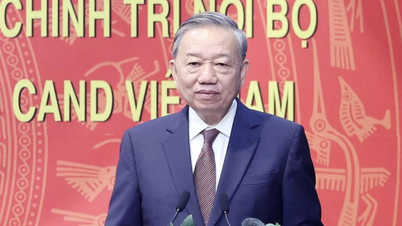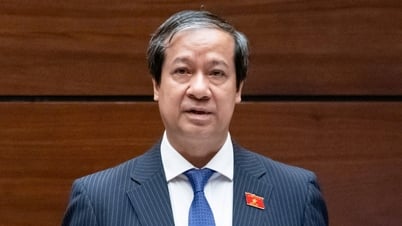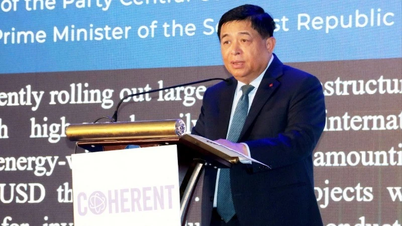The US Treasury Department positively assessed Vietnam's monetary policy and continued to determine "not to manipulate currency".
The US Treasury Department has just released its Semi-Annual Report on " Macroeconomic and Foreign Exchange Policies of Major Trading Partners with the US".
This report examines and evaluates the policies of major trading partners with the United States, contributing about 78% of international trade with the country over the past four quarters, up to June 2024.
The three criteria set by the country's Ministry of Finance when considering the possibility of currency manipulation by major trading partners include: bilateral trade surplus with the US, current account surplus, and one-sided, prolonged intervention in the foreign exchange market.
Specifically, the first two criteria include a bilateral trade surplus with the US of no more than $15 billion, and a current account surplus equivalent to no more than 3% of GDP. The third criterion is based on the total net foreign currency purchases by the central bank over 12 months.
If an economy exceeds two of the three criteria above, the US will put them on a "monitoring list". That country will also continue on this list for at least the next two reporting periods.
This report concludes that no trading partner intervenes in exchange rates with the aim of influencing the balance of payments or gaining an unfair competitive advantage in international trade.
In this reporting period, Vietnam and 7 economies such as China, Japan, South Korea, Taiwan, Singapore, Taiwan and Germany, were on the "monitoring list" when two criteria exceeded the threshold, including bilateral goods surplus and current account surplus.
In fact, the bilateral trade surplus between Vietnam and the US has expanded significantly over the past six years, mainly due to growth in goods trade, led by electronics and machinery. The bilateral goods trade surplus between Vietnam and the US was US$113 billion by the end of June 2024. At the same time, Vietnam continues to be the third largest goods trading partner with a surplus with the US, and a deficit of US$1.6 billion in bilateral services trade with the US.

Source: IMF, SBV
With the current account balance criterion (showing the difference in import-export turnover; the difference in service revenue and expenditure from abroad; net income from workers and investors from foreign sources), Vietnam's current account surplus will reach 5% by the end of June 2024.
The current account continued to record large quarterly surpluses after deficits in 2021 and 2022 as Covid-19-related production restrictions hit export earnings and high commodity prices increased import costs. The goods surplus expanded 8.6% over the reporting period, supported by a recovery in foreign demand for manufactured goods. The current account surplus was also supported by rising remittances, despite a decline in net service income.

Estimated monthly foreign exchange purchases and sales data of the State Bank, as of June 2024. Source: SBV, US Treasury estimates
In addition, Vietnam's foreign exchange reserves as of the end of June 2024 were about 84.1 billion USD, accounting for 19% of GDP. Vietnam's net foreign exchange sales from July 2023 to June 2024 were 1.5% of GDP, equivalent to about 6 billion USD.
In the Joint Statement on upgrading Vietnam-US relations to a Comprehensive Strategic Partnership, the US also highly appreciated Vietnam's continuous efforts in continuing to modernize and further enhance the transparency of Vietnam's monetary and exchange rate policy framework.
On the basis of the Comprehensive Strategic Partnership between the two countries, the State Bank said it will continue to coordinate with ministries and branches to maintain close cooperation and establish regular and effective communication channels with the US Treasury Department, thereby enhancing understanding, sharing information and promptly resolving issues of mutual concern.


























![[Photo] National Assembly Chairman attends the seminar "Building and operating an international financial center and recommendations for Vietnam"](https://vphoto.vietnam.vn/thumb/1200x675/vietnam/resource/IMAGE/2025/7/28/76393436936e457db31ec84433289f72)









































































Comment (0)